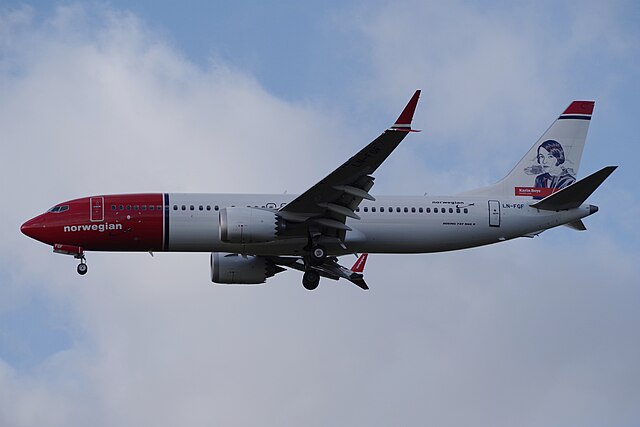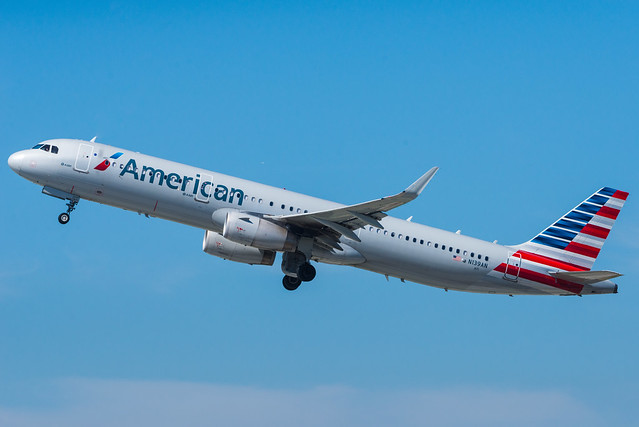Logan SF34 at Rotterdam on Sep 30th 2015, hydraulic failure, runway excursion after safe stop
Last Update: December 19, 2016 / 16:09:04 GMT/Zulu time
Incident Facts
Date of incident
Sep 30, 2015
Classification
Incident
Cause
Runway excursion
Airline
Loganair
Flight number
LC-843
Departure
Rotterdam, Netherlands
Destination
Aberdeen, United Kingdom
Aircraft Registration
G-LGNJ
Aircraft Type
SAAB 340
ICAO Type Designator
SF34
The airport was closed until about 22:00L (about 5.5 hours).
The Dutch Safety Board reported they are investigating an occurrence with a small airliner at Rotterdam with a hydraulic failure affecting nose wheel steering.
The Dutch Safety Board subsequently reported that the aircraft was climbing through 400 feet AGL when the crew selected the flaps up and received a master caution indicating a problem with the aircraft hydraulics. The crew joined a nearby holding pattern, worked the relevant checklists, afterwards declared emergency and set course to return to Rotterdam advising that they probably would not have nose gear steering available. The aircraft landed safely on runway 06 and came to a full stop on the runway, however began to slowly move and with no nose wheel steering moved onto soft ground where it came to a final stop. The DSB is going to perform a shortened investigation into the occurrence.
On Dec 19th 2016 the DSB released their final report concluding the probable causes of the serious incident were:
Conclusion 1
The serious incident on 30 September 2015 with the Saab 340B at Rotterdam The Hague Airport was initiated by a broken aluminum down lock swivel of the right hand main landing gear due to fatigue. This problem was recognized by Saab Aircraft and they issued a non-compulsory Service Bulletin 340-32-142 to replace the aluminum swivels.
The Saab 340B hydraulic system provides sufficient redundancy to continue safe operation when an aluminum swivel fails. The non-compulsory Service Bulletin 340-32-142 issued by Saab Aircraft to replace the aluminum swivels instead of an Airworthiness Directive is therefore acceptable.
Conclusion 2
The flight crew delayed the appropriate memory item, hydraulic pump switch off, during the hydraulic failure. No particular reason was found.
Conclusion 3
The layout of the hydraulic malfunction checklists, and the missing engine shutdown procedure made the flight crew to shut down the engine by the normal procedure. This resulted in an uncontrolled forward motion of the aircraft which ended in the grass next to the runway, with neither braking nor nose wheel steering capabilities.
Conclusion 4
When the central hydraulic system fails, one has to rely on the hydraulic backup systems.
The HYDRAULIC FLUID LOSS Expanded Abnormal Checklist gives the impression that operation of the hand pump lever hydraulic system is unlimited, while in practice this is limited to approximately 150 lever strokes.
The outcome of this incident however was influenced by the decision of the flight crew to increase the pressure of the brake accumulators by using the hand pump, although the brake accumulators were already on working pressure capable of at least one full landing.
The activation of the hand pump, with the brake accumulators on normal hydraulic pressure, may create an overpressure resulting in the activation of the relief valve spilling the limited available hydraulic fluid overboard.
The loss of brake pressure on the runway may have been avoided if the flight crew was more aware of the limitations of the hand pump hydraulic system.
Conclusion 5
After the aircraft stopped in the grass next to the runway, there were no imminent threats for aircraft occupants and the aircraft integrity was evident. Therefore a normal disembarkation was possible.
The DSB reported the captain (ATPL, 5,317 hours total, 5,081 hours on type) was pilot flying, the first officer (CPL, 645 hours total, 395 hours on type) was pilot monitoring.
When the aircraft climbed through 400 feet AGL the crew received a hydraulic indication and aural warning and noticed that the main hydraulic pressure was low. The flaps were moving although the flap lever had been placed to retract. After levelling off the hydraulic quantity indicatin was detected decreasing. The crew entered a holding to work the related checklists, the hydraulic pump was turned off. The landing gear was released via alternate extension, then the crew proceeded to hand pump the hydraulic pump to increase the pressure in the brakes accumulators.
The aircraft stopped on the runway, the crew began to shut the engines down when the aircraft started to move again and went off the runway into the grass.
Following landing a broken right hand landing gear swivel ("A hydraulic swivel is a connection that allows the connected hydraulic lines to rotate. Hydraulic swivels are joints where the hydraulic fluid passes through.") was found that caused the leakage of the hydraulic fluid.
The DSB analysed: "A HYDR caption light on the Central Warning Panel and an aural warning were activated during the initial climb. According to the procedures (memory items), in case of a hydraulic failure, the electrical hydraulic pump shall be switched off. The flight crew delayed switching off the electrical hydraulic pump until they started reading the expanded abnormal checklist. Therefore, a prolonged loss of hydraulic fluid occurred."
With respect to the brakes losing grip and allowing the aircraft to move again the DSB analysed: "The HYDRAULIC FLUID LOSS notes on page A33x repeatedly warned that continuous pumping of the brakes is required to achieve and maintain enough brake pressure. No particular attention is given to the limited amount of hydraulic fluid in the hand pump reservoir and the associated limited number of (150) lever strokes, while the note in the expanded checklist gives the impression that this capacity is unlimited."
Incident Facts
Date of incident
Sep 30, 2015
Classification
Incident
Cause
Runway excursion
Airline
Loganair
Flight number
LC-843
Departure
Rotterdam, Netherlands
Destination
Aberdeen, United Kingdom
Aircraft Registration
G-LGNJ
Aircraft Type
SAAB 340
ICAO Type Designator
SF34
This article is published under license from Avherald.com. © of text by Avherald.com.
Article source
You can read 2 more free articles without a subscription.
Subscribe now and continue reading without any limits!
Read unlimited articles and receive our daily update briefing. Gain better insights into what is happening in commercial aviation safety.
Send tip
Support AeroInside by sending a small tip amount.
Related articles
Logan SF34 near Kirkwall on Oct 25th 2015, chips not fried
A Loganair Saab 340 on behalf of Flybe, registration G-LGNJ performing flight BE-6997 from Edinburgh,SC to Shetland Islands Sumburgh,SC (UK), was…
Loganair SF34 near Inverness on May 22nd 2014, icing
A Loganair Saab 340 on behalf of Flybe, registration G-LGNJ performing flight BE-6774 from Aberdeen,SC to Shetland Islands,SC (UK) with 33 passengers…
Loganair AT42 at Aberdeen on Aug 27th 2022, both engines show 0 torque in flight, multiple electrical failures
A Loganair Avions de Transport Regional ATR-42-500, registration G-LMRC performing flight LM-72 from Aberdeen,SC to Sumburgh,SC (UK), was climbing…
Logan AT42 near Aberdeen on Jul 23rd 2024, engine shut down in flight
A Loganair Avions de Transport Regional ATR-42-600, registration G-LMSA performing flight LM-436 from Sumburgh,SC to Glasgow,SC (UK), was enroute at…
Logan E145 at Manchester on Dec 5th 2024, lightning strike cracks windshield
A Loganair Embraer ERJ-145, registration G-SAJH performing flight LM-26 from Manchester,EN to Aberdeen,SC (UK), was climbing out of Manchester when…
Logan AT72 at Aberdeen on Sep 28th 2023, unusual odour on board
A Loganair Avions de Transport Regional ATR-72-212A, registration G-LMTD performing flight LM-78 from Aberdeen,SC to Shetland Islands,SC (UK), was…
Logan E145 enroute on Dec 20th 2022, indication fault
A Loganair Embraer ERJ-145, registration G-SAJI performing flight LM-45 from Aberdeen,SC to Bristol,EN (UK), was enroute at FL330 about 25nm…
Newest articles
Norwegian B38M at Malaga on Nov 22nd 2025, another aircraft on landing runway
A Norwegian Air Shuttle AOC Boeing 737-8 MAX, registration LN-FGF performing flight DY-1800 from Oslo (Norway) to Malaga,SP (Spain) with 189 people…
American A321 near Houston on Nov 23rd 2025, fumes on board
An American Airlines Airbus A321-200, registration N139AN performing flight AA-2118 from Orlando,FL to Phoenix,AZ (USA), was enroute at FL320 about…
Subscribe today
Are you researching aviation incidents? Get access to AeroInside Insights, unlimited read access and receive the daily newsletter.
Pick your plan and subscribePartner

ELITE Simulation Solutions is a leading global provider of Flight Simulation Training Devices, IFR training software as well as flight controls and related services. Find out more.
SafetyScan Pro provides streamlined access to thousands of aviation accident reports. Tailored for your safety management efforts. Book your demo today
AeroInside Blog
Popular aircraft
Airbus A320Boeing 737-800
Boeing 737-800 MAX
Popular airlines
American AirlinesUnited
Delta
Air Canada
Lufthansa
British Airways






